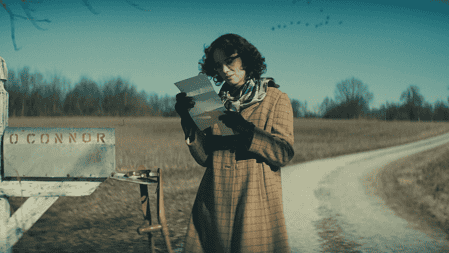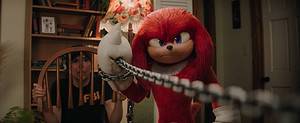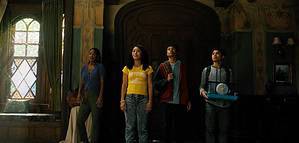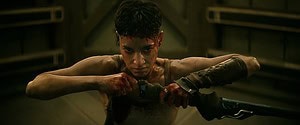As a filmmaker, you always hope that an audience will resonate with your story. But Rocío Mesa, who brought her narrative feature debut, Tobacco Barns (Secaderos), to SXSW this year, couldn’t have predicted just how much her Spanish story would connect with Texas audiences.
“After the film’s first Q&A––I’m not even exaggerating––almost every single person in that room came to give me a hug,” recounted Mesa, sitting outside of the Alamo Drafthouse Cinema in South Lamar. “I was really, really overwhelmed by their reaction.”
One of the most charming additions to this year’s Visions section, Tobacco Barns follows two young Spanish women, one a child and one a teenager, spending a Summer with their families in the sweltering but vast tobacco farms of Southern Spain. The young girl, Vera, lets her imagination run wild in the lush forests of the countryside, while the teenager, Nieves, longs to escape farm life and enjoy her freedom.

“When I was little, being in the countryside was truly wonderful,” explains Mesa. “Then, when I turned into a teenager, I couldn’t breath there. I needed to get out. I do connect and empathize with both characters [and] I think the audience can connect with them both, too.”
However, the star of the film is not the human characters, but a non-human character: a towering forest creature made of tobacco plants affectionately nicknamed Nico, short for Nicotine. Before we meet any of the human characters, we watch Nico shuffle across the landscape in an opening sequence that will immediately enrapture audiences.
“When I was growing up [in Spain], I would see these big architectural buildings and, in my head, those were dens of monsters, right? You’re a little kid, you see these gigantic cabins, and of course, in your imagination, there’s some sort of creature that lives there. That fantasy, that childhood memory, stayed with me.”

There are too many words to describe Nico: majestic, mythical, otherworldly in design but with a somber, somewhat tired facial expression that is instantly recognizable. It certainly evokes cinema’s past: My Neighbor Totoro, The Neverending Story, and, of course, the many illustrious works of Jim Henson.
Though it might be hard to imagine, Mesa wasn’t initially sure how this creature was going to come to life. However, her screenplay caught the attention of DDT Efectos Especiales, the Academy Award-winning SFX studio best known for their collaborations with Guillermo Del Toro (Pan’s Labyrinth, Hellboy, etc.). Before she knew it, she was touring their studios.
“I was like, ‘Okay, I got invited to visit their studios, I’m going to get some ideas on how to build a creature, but there’s no way I can afford working with these people,’” she remembered thinking to herself. “To my surprise, they fell in love with the story and especially fell in love with the creature. They entered the movie as associate producers.”
In yet another stunning achievement of practical effects, company co-owners Montse Ribé and David Martí helped to conceptualize and build Nico from the ground up. The creature’s design, tall and voluminous but with no arms or legs, forced the team to develop new technology in order to operate it. Turns out that operator would be Martí himself in what was a labor-of-love production process, according to Mesa.
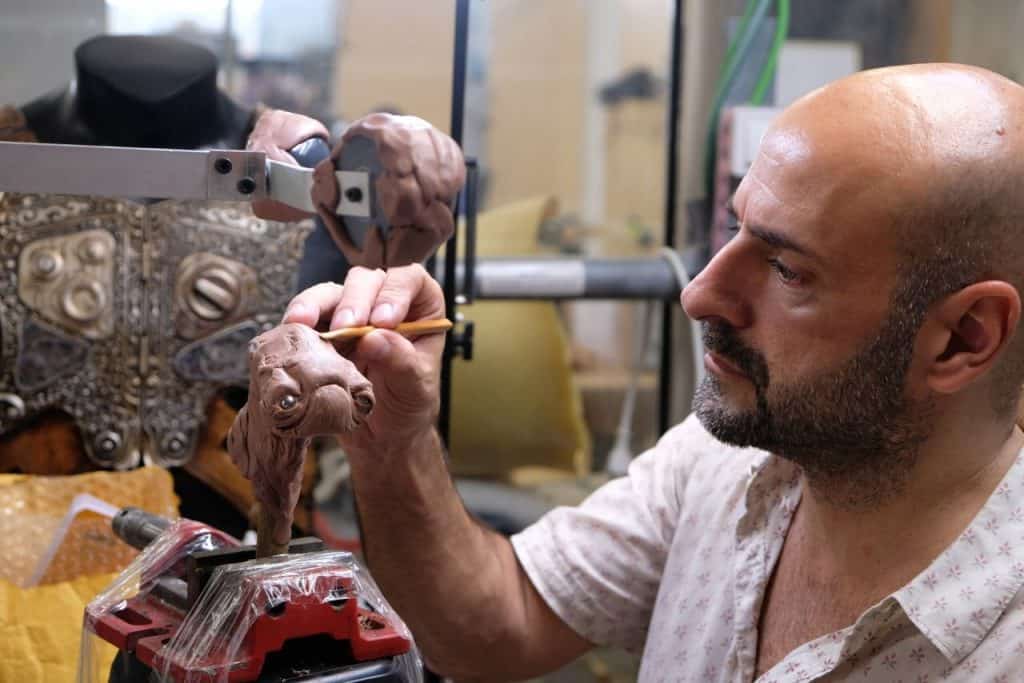
“The movie was shot in Southern Spain––we’re talking about 100-and-something degree weather, and [David] was inside this gigantic monster, covered in leaves. It was physically demanding for him.”
However, high risk has brought high reward. Following its premiere at the San Sebastian International Film Festival and an award-winning stint as part of the Gijón International Film Festival, the film took SXSW by storm and secured the Visions Audience Award. Tobacco Barns will release in Spain, courtesy of Begin Again Films, in June of this year, but Mesa is excited for a potential international deal coming out of South By.
“American audiences have been engaging with it in a way that I never expected. Everyone is so touched and moved by this story and by the creature.”
In an extensive and exclusive interview with Geek Vibes Nation, Mesa breaks down the creature’s design, expands on the many women at the heart of her story, and recalls shooting on-location with a community of nonprofessional actors. Here is our conversation, edited for length and clarity.

Rocío, we have to talk about your film’s beautiful creature, which is a stunning achievement in practical effects and puppetry. How did you conceive this character?
The creature was in the story from the very beginning. This movie is set in the little town where I grew up in Southern Spain. The main source of the economy were tobacco barns. When I was growing up there, I would see these big architectural buildings, and in my head, those were dens of monsters, right? You’re a little kid, you see these gigantic cabins, and of course, in your imagination, there’s some sort of creature that lives there. That fantasy, that childhood memory, stayed with me, and it was definitely there in the first draft of the screenplay.
The thing was that I wanted this creature to be created using practical effects. I didn’t want to do visual effects, but I knew it was going to be challenging. One of my co-producers had a connection with DDT SFX, the team behind Pan’s Labyrinth, Hellboy, Lord of the Rings, so many big productions. I think they’re one of the best in the world, hands down, when it comes to practical effects. I was invited to their studio, which was mind-blowing.
It’s probably incredible.
It’s like Disneyland on steroids. It’s every possible monster practical effect you could ever imagine. I was there, freaking out, taking pictures of everything. I was like, “Okay, I got invited to visit their studios, I’m going to get some ideas on how to build a creature, but there’s no way I can afford working with these people.” To my surprise, they read the screenplay, fell in love with the story, and especially fell in love with the creature. They were like, “We always do the bad guy, but this is a beautiful creature connected to nature, with the land, and we are rediscovering the excitement of our profession, of our career, by looking at this project. We want to do it.” They entered the movie as associate producers.
Wow!
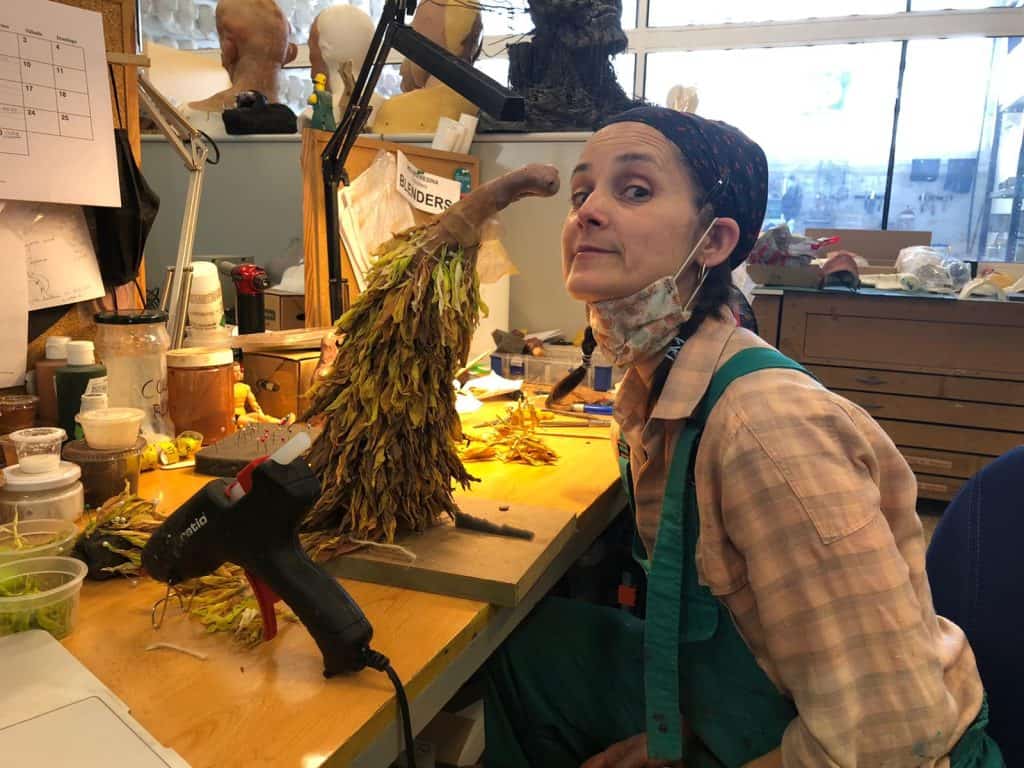
Honestly, it’s one of the most magical and special things that has happened in my career. It has been a dream come true working with Montse Ribé and David Martí [co-owners of DDT]. They’ve been so involved with the project and designing the creature with them was such a fulfilling process. It took about a year to design it and build it. They even had to develop new technology because of the way we wanted the creature to be; he’s so tall and he has no arms and no legs. They needed to develop a new structure, new skeleton bones, for this creature and then the tobacco leaves that cover the creature were made one by one. They created this new textile as a combination of silk and cotton, then the veins of the leaves are made out of silicone. Each of them have different molds and they’re hand painted.
That reminds me of Big Bird, how each feather was individually dyed and hand-glued. It has a very similar aesthetic.
Exactly, yeah. The head is animatronics and a few people control it. David is actually inside the creature.
That’s amazing.
He was so emotionally connected to the creature that he was like, “Okay, when kids ask who the creature is, I want to be able to say it was me,” you know? Montse Ribé, the co-creator, was baby Hellboy, so they do this only once in a lifetime, but David decided to do it. The movie was shot in Southern Spain––we’re talking about 100-and-something degrees weather, and he was inside this gigantic monster, covered in leaves. It was physically demanding for him and very challenging to bring this Hollywood creature into a tiny, really small set and production. The challenges were big, but I’m so, so happy with the results. American audiences have been engaging with it in a way that I never expected. Everyone is so touched and moved by this story and by the creature. By the way, we call the creature “Nico.” “Nicotina,” “Nico” for his friends.

[laughs] What was the inspiration behind how Nico moves and emotes? There is something so expressive when they open their mouth and make their noise, something almost nurturing.
I’m so glad that you used the pronoun “them,” because one of the things that I had very clear in my mind was that I didn’t want the creature to be masculine. Every comic book we have ever read, every movie with creatures—which I’m a big fan of, you know, [things like] Swamp Thing, all that—it’s clearly masculine creatures, right? I wanted to do a genderless creature that was closer to the feminine universe and I think we definitely achieved that. When it came to the face, we wanted the creature to inspire tenderness. You know when you’re in the grocery store and there’s a very tender old lady in front of you? That. That is the feeling that you need to get from this creature.
The remote control for the animatronic would control the eyes and the mouth, but also we had these little eyebrows antennas with the flower of the tobacco plant that makes the creature way more expressive and way more feminine. It was important that the creature would be able to open its mouth because there is a ray of light that comes out. We even developed a system to light up the inside of the creature, but we didn’t have the resources on set to put it into practice. The creature also breathes; when it’s in motion, you will see the tobacco leaves moving in and out, like it’s breathing. There is a scene in which the creature is lying on the floor and, in that scene, there is actually a person inside pushing the leaves in and out for the breathing. Truly, the amount of love that DDT puts into the creatures they create is overwhelming. It’s emotional. I remember when I was like, “It’s a wrap for Nico,” Montse and I looked at each other and started crying because we put so much love and work into it.
Were there any other creatures in cinema’s past that you thought of? Maybe it’s because I’m a big Hayao Miyazaki fan, but there was something My Neighbor Totoro-esque about the entire experience.
Miyazaki was definitely in my heart. Not in a direct way, but it was subconscious.

Right, the spirit [of Miyazaki].
A lot of critics have referenced that. I think when it comes to the creature, I thought of Jim Henson. I grew up with Fraggle Rock, that’s where I come from. [laughs]
It’s hard to do anything in puppetry or creature design without evoking Jim Henson.
When the time came to create the “voice” of the creature—quote unquote because it doesn’t really speak, it creates these noises…
But it’s a singular noise.
Very, very singular noise. It was very challenging. We didn’t have a budget. We couldn’t hire incredible sound designers. We didn’t have time, straight up. I was like, “How am I going to make this Star Wars sound with two euros?” [laughs] One of the sound guys told me, “You know, my girlfriend has a friend that is a collector of weird musical instruments. You might want to talk to her.” I had a meeting with her and it turns out this girl is super creative. She brought all these weird instruments and began making all these weird noises.
Was it a bunch of different instrument sounds combined together to create this one sound?
Sort of. We used a technique where you take the sound and make it super high pitched, duplicate this same sound and make it super low pitch, and then put it one or two frames off. It creates this vibrato, like a vibration. I came up with this idea, the sound guy was like, “Okay, let’s do it,” and the moment we did it, it was like, boom. It worked.
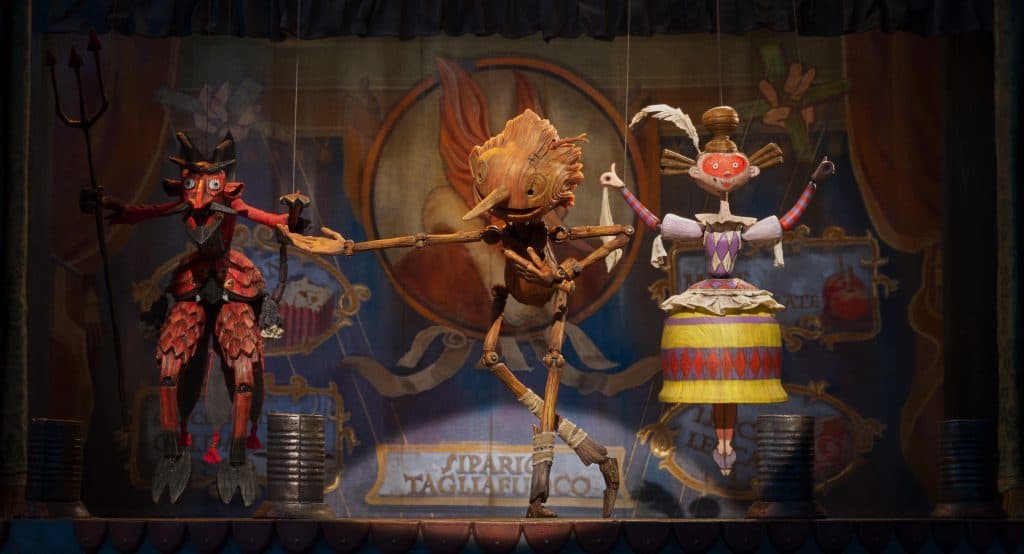
It’s perfect. By the way, considering DDT’s involvement, I have to ask: does Guillermo del Toro know about this film? He should host a screening sometime!
I don’t know if he knows, but I hope so! Guillermo is amazing. I had a chance to meet him once. When I came to the United States, I was really struggling economically. I come from a working class environment and I had many, many jobs at the same time. One of the jobs I had was working at Meltdown Comics. It was the biggest comic bookstore on the West Coast and he was one of our clients. So, he would come and buy comics from me.
Little did you know you were servicing a soon-to-be three-time Oscar winner!
Yeah, Pinocchio! I was very happy for him. Also, I was a big fan of Marcel the Shell, but I mean, you cannot have it all.
We could talk about the creature all day, but I do also want to talk about some other things in the film as well, especially the two women we follow. Their stories happen parallel to each other, but in a weird way, there is a floaty sense that they are two different periods in the same timeline. What was the inception behind these two specific women and the choice to hop back and forth between their stories in the same location?

You’re completely right. Little Vera is eight years old and spending the summertime at her grandparents’ little town, but she’s coming from the big city. She has a connection with nature that is very exciting and magical. She feels the freedom of being in the countryside and she can find the beauty in it. Nieves grew up in that little town but she’s a teenager now, so she’s not able to see the magic anymore. Like you said, even though they are alive in the same town at the same moment, while I was writing this film, I always thought that they could totally have been the same person in different moments of their lives. I do connect and empathize with both characters because I grew up in a little town.
When I was little, being in the countryside was truly wonderful for me and my development. I had a connection with nature that was very organic. Then, when I turned into a teenager, I couldn’t breath there. I needed to get out. I had creative desires that couldn’t be fulfilled. I think the audience can connect with them both, too. Maybe you’re going to feel more aligned with one or the other, but then we have the rest of the generations of females in the movie: Vera’s mother, who got out of the little town and went to the city, is the same age as Nieves’ mother, who stayed there. They have completely different lives and opportunities. It’s a generational film that reconciles all of these generations and makes you understand all of their realities from a very feminist point of view.

You shot on-location, as you mentioned earlier, and I don’t think the film could’ve been shot anywhere else considering how personal of a story this is for you. What was that experience like?
It was an excuse to go back to my roots, honestly. I think, as creatives, we always find ways to bring us toward places where we wouldn’t go in a regular scenario. You’re like, “I’m just going to create this film so it’s an excuse to go back to the place where I grew up and to connect with it from a different perspective.” It really worked out. It was such an incredible emotional journey for me.
Regarding the location, there’s 41 little towns that are connected at the foot of the Sierra Nevada hills connected by agriculture. We chose the most beautiful and practical places for us to shoot this movie, creating one imaginary little town. You never get to see the streets of the town, you never get to see the plaza, you never get to see recognizable spots. You always see the countryside, and I did that on purpose. We created this imaginary town that could be yours. It could be Texas. It could be Kentucky. But it’s Southern Spain. The fact that we’re focusing on the landscape and not the architecture helps the audience to connect with it. But obviously, the landscape there is gorgeous, and we took full advantage of that.
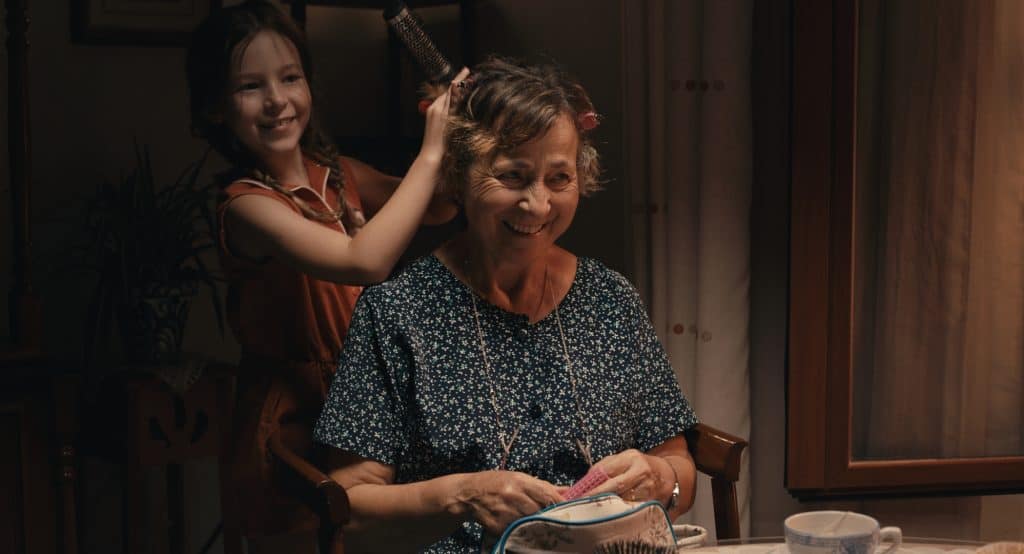
I read that you worked with a lot of non-actors on this film…
Everybody’s a nonprofessional actor.
Really?
They’re neighbors in the area. The only one with a little bit of acting experience is the one that plays Vera’s mother [Tamara Arias], who is a friend of mine from forever ago. The majority were housewives, farmers, kids of the area. They all speak with this very specific accent from this region. The actress who plays Nieves [Ada Mar Lupiañez], whose performance is breathtaking, is now pursuing a career as an actress, but she didn’t have any experience when she was in front of the camera.
Nonprofessional actors sometimes give some of the most beautiful performances. What was the process in getting this many non-actors to help you with this project?
It’s a completely different audition process. A lot of the background actors or extras are friends of mine from high school or my own family or my neighbors. When it comes to the main actors, we published a casting call in the newspaper and the local radio. First, people thought it was a scam. People thought we were human trafficking because not many movies are made there. We were like, “No experience needed” and they were like, “This sounds really sketchy!” [laughs] But then people started believing in it. Serious journalists were supporting us. Hundreds of people came to the auditions.
These auditions were very different from normal auditions because they don’t know what they’re coming for, so they open their hearts and share their entire lives with you. You create a very vulnerable space. My job and the casting director’s job is to decide if these people are able to work within our imaginary world, to be present, to improvise, to be able to listen to others. Some people have that and some people don’t, but you recognize it right away.

The kids in this film are a lot of fun. There are a few really innocent, whimsical sequences with all them playing together. What was it like to shoot with them?
It was super fun. I used a technique in which I let the actors read the script only once. We did a table read and all the kids read their lines and became familiarized with the story. We got to speak about feelings, background, the whole storyline, for a whole day. That was the last time they saw the screenplay. After that, we were working with feelings. They were improvising lines but, funny enough, if you read the screenplay now, the lines in the movie and the ones that I wrote are almost the same. When you’re connecting to feelings and you’re present, human beings are not that original, you know? We’re going to go back to the same expressions and the same paths to communicate what we’re feeling at that moment.
The beauty of it is that the acting is super naturalistic. They’re using their own words. They’re using this language which makes the film super special if you’re watching it in Spanish. The kids were super comfortable and we had a lot of fun. I had a lot of techniques to have them pay attention and stay focused. I had a whistle, so every time they were getting out of control, I would blow the whistle and all of them were like, “Okay, okay, okay!”
You were a camp counselor, in a way.
But in a very fun way. I would do a conga line with them to go from one place to another on set, so they thought it was a game. We had a secret word and every time I would say this secret word, they knew they needed to pay attention for real. The secret word was “perrito bolador,” which is “little flying dog.” So, I was like, “Perrito bolador! Little flying dog!” And everyone was like, “Okay, we need to get serious here.” [laughs]

The children in this movie really reminded me of Alcarràs by Carla Simón, which is another Spanish movie that I really loved. It feels like there is a significant wave of Spanish filmmakers who are reckoning with themes of farm life versus city life and systems that oppress tradition. What, to you, is the significance of being able to tell this very specific Spanish story here at a festival like SXSW?
You are completely right. There is this generation of female filmmakers especially that are connecting when it comes to approaching these topics. We’re going back to our roots, talking about the disappearance of traditions, connecting with stories from a point of view of tenderness. Funny enough, Carla Simón was shooting Alcarràs at the same time that I was shooting Tobacco Barns and we didn’t know.
No way.
We didn’t know about each other’s stories and we premiered the same year with clear similarities. Then we were like, “Oh my god.” I think it’s magical. It’s like the zeitgeist, right? It’s this collective unconscious that’s in our generation. I feel very grateful for that because, in a way, it’s creating a community with other female filmmakers. I feel like I’m part of a movement and I’m so proud of my fellow filmmakers and the films that they’re creating.
I’m originally from Spain but based in LA. It was very important for me to be able to showcase this film in the country that is my home right now, but I was not expecting how much American audiences have been connecting to these very Spanish stories. After the film’s first Q&A––I’m not even exaggerating––almost every single person in that room came to give me a hug. They were so moved. I was really, really overwhelmed by their reaction. I feel like here in Texas specifically, people can connect so much with this story of the countryside. There are tobacco plantations in the US in many, many states, so I think it’s an American story as well.
Tobacco Barns had its North American Premiere as part of the Visions section of SXSW 2023. It is currently seeking international distribution.

Larry Fried is a filmmaker, writer, and podcaster based in New Jersey. He is the host and creator of the podcast “My Favorite Movie is…,” a podcast dedicated to helping filmmakers make somebody’s next favorite movie. He is also the Visual Content Manager for Special Olympics New Jersey, an organization dedicated to competition and training opportunities for athletes with intellectual disabilities across the Garden State.



